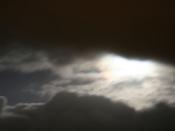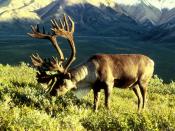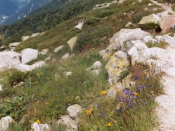The Artic and Alpine Tundra Biomes Artic Tundra The artic tundra, in the northern hemisphere is the coldest biome in the world. Tunturia means treeless plains; hence what we now call tundra. When the thought of the artic arises the majority would picture snow and wide-open land with rolling hills and mountains. Put a few animals and plants in that mental picture and you would be right on track.
The artic tundra has extremely low temperatures and dry air year round. Permafrost, the tundra's frozen soil, stays frozen all year round, locking in the nutrients of the earth! Because of the climate "plants are short and group together to resist cold temperatures"ÃÂ (Berkley.edu). Approximately 1,700 different plants have been discovered within the artic tundra. Believe it or not 400 species of flowers also reside here. Among the flowers are "low shrubs, sedges, reindeer mosses, liverworts and grasses"ÃÂ (Berkley.edu). Plants can only survive the weather three months out of the year! This artic tundra has very poor nutrients with its primary producers, nitrogen and phosphorous.
Nitrogen comes from "biological fixation"ÃÂ and phosphorous is "created by precipitation"ÃÂ (Berkley.edu). The tundra receives approximately six to ten inches of precipitation, including melting snow, per year! Another characteristics of the tundra include: "low biotic diversity, simple vegetation structure, limitation of drainage, short season of growth large population oscillation (Berkley.edu).
Temperatures of the tundra range from 54 degrees in the summer to "ÃÂ30 in the winter. This makes for a descent place to live in the summer and a hard and long place to be in the winter. Living in the tundra are herbivorous and carnivorous mammals, migrating birds, insects and fish.
Some of the more popular mammals in the tundra are: artic foxes, wolves, polar bears, squirrels, caribou, voles, artic hares, and lemmings. The birds...


